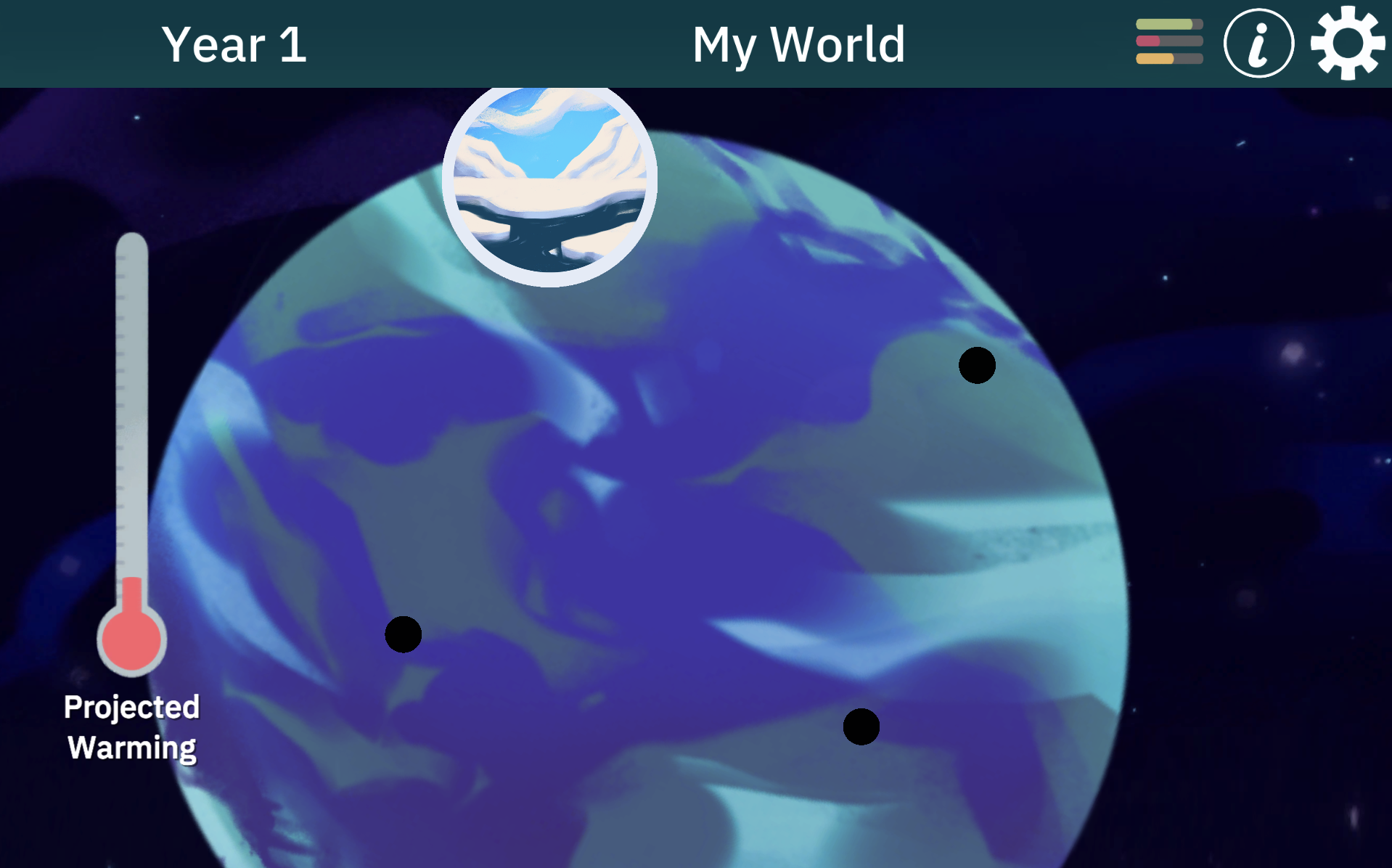Warmer
- Elizabeth Swensen
- Nicole Feldl
Warmer is a web-based game that simulates global climate change. It takes place on a world like our own but with a few elements of narrative and visual fantasy to distinguish it from Earth. Each action a player takes pushes the calendar forward, advancing the climate model and displaying the impact of player actions as the world warms. Four interactive regions each have their own mini-game experiences and connections to the underlying model:
- In the City, a suite of proposals for civic action have the potential to reduce carbon emissions, but they come with various costs and levels of public support. Players vote on the initiatives and affect the radiative forcing of the climate.
- In the Arctic, sea ice is melting. Players block incoming solar radiation with a sea ice paddle and must avoid infrared radiation that melts the ice. As the world warms, the game grows more difficult: the sea ice paddle shrinks, though clouds also reflect more solar radiation to space.
- Wildfires are growing more frequent. Players fight fires using diminishing water reservoirs. A successful firefighting season leads to public goodwill, though fires produce a slight cooling effect due to interactions between smoke aerosols and clouds.
- Deforestation, industrial emissions, and carbon capture solutions all have the potential to influence carbon emissions. Players choose whether to deploy volunteers towards planting trees, protesting emissions, or investing in technology. The number of volunteers is influenced by public opinion, and different worker management strategies have different impacts on the radiative forcing of the climate. After 30 years, the game ends, providing a narrative summary of the climate change and an encouragement to play again to attempt different outcomes.
Essential question
What are the forcings and feedbacks that govern global climate change?
Learning objectives
In this game experience, players form hypotheses, perform experiments, and evaluate their results. The underlying climate model enables a hands-on approach to learning the complex interactions among components of a climate system that is changing due to human activities. By encouraging replay and demonstrating the impact of player choices, the game fosters agency and efficacy in the future of the planet.
Subject
Earth and Space Sciences
Gameplay Time
Approximately 30-45 minutes
Age Range
Middle and high school students
Language
English
Materials
Web-based game is available at https://warmergame.ucsc.edu.
Model
The climate model underlying the game is a 1-dimensional energy balance model. It includes seasonal and latitudinal variations in climate, an idealized representation of sea-ice thickness and albedo, and an idealized representation of atmospheric energy transport as a moist diffusive process. The model code is available at https://github.com/nfeldl/EBM-icy-moist-seasonal.
Contact
Elizabeth Swensen (eswensen@ucsc.edu) and Nicole Feldl (nfeldl@ucsc.edu), University of California, Santa Cruz. If you use the game in your classroom, we would love to know!
Acknowledgments
This material is based upon work supported by the National Science Foundation under award AGS-1753034. Any opinions, findings, and conclusions or recommendations expressed in this material are those of the author(s) and do not necessarily reflect the views of the National Science Foundation.
